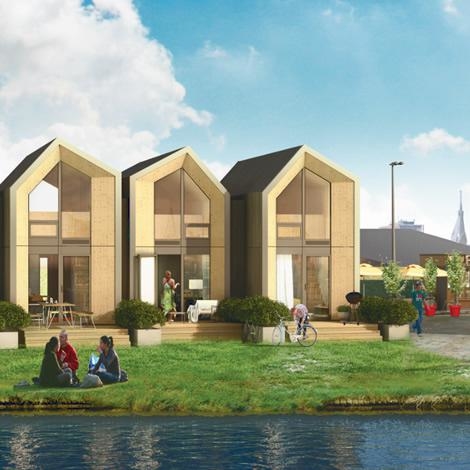With more refugees coming to Europe and so to the Netherlands one of the biggest problems is the housing of these refugees. At this moment around 3000 refugees come to the Netherlands per month to ask for asylum. As our law prescribes we should give them shelter until the procedure for asking asylum is over and the refugee either is a license-holder which means they can live in the Netherlands, or gets pardoned, which means they may not live in the Netherlands. At this moment the main problem is the temporary shelter the refugees need while waiting for ‘green’ light. Another problem is that in some time there will be more refugees as license-holders and they are divided over the municipalities who need to give them a home within four weeks. This stresses our social housing.
There are different reactions to these housing problems. Some people start yelling that they take our homes and so they should just all be sent back. They are afraid that the coming refugees will negatively influence their standards of living. I agree with them to the extent that many people are waiting for years for social housing to get a chance for a place of their own. The problem is that the refugees only have four weeks before they are kicked out of the asylum shelters so they get priority over other people in the social housing system. This raises tension between the refugees and the other people in need of social housing.
Not everyone sees this as a problem but rather as an opportunity. The social housing problem is an opportunity for the building sector in the Netherlands. Who, due to the crisis, have had some tough years in which more than 85.000 full time jobs were lost since 2009. They start to innovate but different than what we are used to in innovation. Instead of upgrading an innovation and often so make products more expensive, they reduce complexity and in this way also reduce costs. Different architects, building companies and social housing corporations have presented new concepts. They are now thinking about container housing, office buildings which will be renovated into social housing, small wooden houses on wasteland and many more suggestions.
I think this is indeed a great opportunity for the building sector and also a step forwards in social housing. For just normal housing as well, where smaller houses started to arise more on the market but only scarcely. While there are many people that want to live in cheaper houses or that are in need of social housing as mentioned before people have to wait for years before they have a chance of getting a house from social housing. I see this happening around me, where friends want to live on their own but they can’t. I believe the social housing system can be improved and that there should come more cheap houses as well.
I think this is a beautiful example of incremental responsible innovation. Incremental innovation is innovation that is introduced in an existing market and with existing technologies. The technologies to do this are all there and the market as shown is there as well. These initiatives should be encouraged, I also believe this can be a responsible innovation. For instance the changing of office buildings into houses is re-use of empty buildings which I think can be a sustainable innovation. So not every responsible innovation needs to be one with new technologies and be more expensive. Sometimes it is important to look into another direction as well when we want to innovate and we can use the situations at hand to inspire us to do so!
